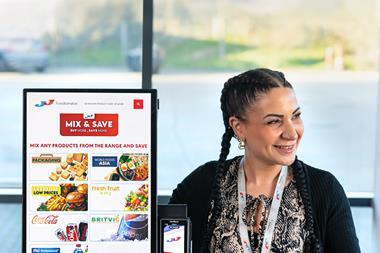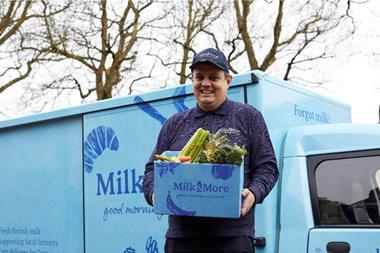With UK consumption of fresh salmon increasing at a rate of 18%, from 301 million meals in November 2003 to 356 million two years later, (TNS 52 w/e November 2005) and prices rising, it is easy to see why sector leaders in both feed and farming are optimistic.
Michael Gibson, chairman of the Scottish Salmon Producers' Organisation, says: "There is a new confidence in the Scottish salmon farming industry. With the primary producer receiving a fair price for its fish, the medium-term prospects for farmers appear to be one of opportunity."
The UK fresh salmon market attracted 1.4 million new people to enjoy the fish from November 2003 to 2005. Export markets continue to be strong, with established destinations such as France, the Rebublic of Ireland and Germany remaining key, while opportunities are opening up in eastern Europe. Fresh Scottish farmed salmon is in demand in more than 30 countries worldwide. Outside Europe the most notable market is the US.
Sid Patten, chief executive of the SSPO, believes there are a number of factors fuelling this demand, not least a growing awareness of the health benefits of Omega-3 oils.
"The eat-more-fish advice from bodies such as the Food Standards Agency and the Joint Health Claims Initiative have been extremely beneficial," says Patten.
Demographic changes are also stoking demand. Fresh salmon has traditionally been the food of choice for the over-45s, but there is now a burgeoning interest from younger generations, particularly 17 to 24-year -old consumers. The SSPO has said that Scotland is well placed to meet the demand because of its being part of the UK market and the quality of fish that it produces.
However, while health is a pivotal driver of consumer consumption, salmon has other credentials. "We must not lose sight of the great taste and versatility of salmon. We must make sure that we keep that message ringing out loud and clear,"says a spokeswoman for Pan Fish. Boosting salmon's status as a premium product by introducing innovative, high-end products, as well as emphasising its Scottish roots, will help, say producers. This will also raise consumer confidence, something which has hit a few low points over the years.
One of the biggest challenges facing producers today is to meet the growth in demand. To achieve this, Pan Fish is consolidating farms into larger, more productive units. It is also increasing the underlying capacity by reducing production time through breeding and feeding.
The company, whose planned acquisition of Marine Harvest is currently being inspected by the Competition Commission, has been investing over the past year in new automated feeding technology, vaccines, barges, nets and underwater cameras to better see the fish and their feeding practices.
Demonstrating responsible environmental stewardship will also remain a priority. Alex Adrian, technical manager of Pan Fish Scotland, says: "Health benefits are being publicised by the media. Combine this with a positive environmental message and the industry's future becomes a sight more assured."
As well as being tied to the prestigious French Label Rouge scheme and covered by PGI status, Scottish farmed salmon is now also committed to its Code of Good Practice for Scottish Finfish Aquaculture. The code is intended to prove that the sector can guarantee the highest standards and defy environmental critics without a regulator, thereby ensuring investor confidence.
To date, more than 90% of the volume of Scottish farmed salmon is signed up to participate. Gibson says: "By adopting the code, salmon farmers are demonstrating their willingness to prove to everyone that production standards and environmental practices reflect the best of modern aquaculture."
He adds: "I want to make sure this vital industry in some of Scotland's most vulnerable areas receives its true recognition for its contribution to the social, economic and nutritional wellbeing of Scotland."n
Michael Gibson, chairman of the Scottish Salmon Producers' Organisation, says: "There is a new confidence in the Scottish salmon farming industry. With the primary producer receiving a fair price for its fish, the medium-term prospects for farmers appear to be one of opportunity."
The UK fresh salmon market attracted 1.4 million new people to enjoy the fish from November 2003 to 2005. Export markets continue to be strong, with established destinations such as France, the Rebublic of Ireland and Germany remaining key, while opportunities are opening up in eastern Europe. Fresh Scottish farmed salmon is in demand in more than 30 countries worldwide. Outside Europe the most notable market is the US.
Sid Patten, chief executive of the SSPO, believes there are a number of factors fuelling this demand, not least a growing awareness of the health benefits of Omega-3 oils.
"The eat-more-fish advice from bodies such as the Food Standards Agency and the Joint Health Claims Initiative have been extremely beneficial," says Patten.
Demographic changes are also stoking demand. Fresh salmon has traditionally been the food of choice for the over-45s, but there is now a burgeoning interest from younger generations, particularly 17 to 24-year -old consumers. The SSPO has said that Scotland is well placed to meet the demand because of its being part of the UK market and the quality of fish that it produces.
However, while health is a pivotal driver of consumer consumption, salmon has other credentials. "We must not lose sight of the great taste and versatility of salmon. We must make sure that we keep that message ringing out loud and clear,"says a spokeswoman for Pan Fish. Boosting salmon's status as a premium product by introducing innovative, high-end products, as well as emphasising its Scottish roots, will help, say producers. This will also raise consumer confidence, something which has hit a few low points over the years.
One of the biggest challenges facing producers today is to meet the growth in demand. To achieve this, Pan Fish is consolidating farms into larger, more productive units. It is also increasing the underlying capacity by reducing production time through breeding and feeding.
The company, whose planned acquisition of Marine Harvest is currently being inspected by the Competition Commission, has been investing over the past year in new automated feeding technology, vaccines, barges, nets and underwater cameras to better see the fish and their feeding practices.
Demonstrating responsible environmental stewardship will also remain a priority. Alex Adrian, technical manager of Pan Fish Scotland, says: "Health benefits are being publicised by the media. Combine this with a positive environmental message and the industry's future becomes a sight more assured."
As well as being tied to the prestigious French Label Rouge scheme and covered by PGI status, Scottish farmed salmon is now also committed to its Code of Good Practice for Scottish Finfish Aquaculture. The code is intended to prove that the sector can guarantee the highest standards and defy environmental critics without a regulator, thereby ensuring investor confidence.
To date, more than 90% of the volume of Scottish farmed salmon is signed up to participate. Gibson says: "By adopting the code, salmon farmers are demonstrating their willingness to prove to everyone that production standards and environmental practices reflect the best of modern aquaculture."
He adds: "I want to make sure this vital industry in some of Scotland's most vulnerable areas receives its true recognition for its contribution to the social, economic and nutritional wellbeing of Scotland."n

















No comments yet